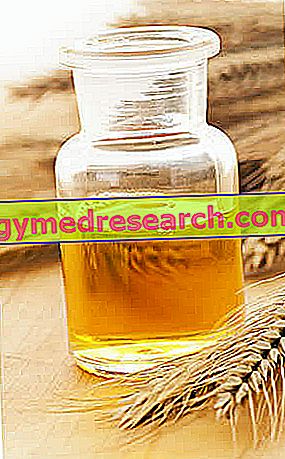Generality
The oximeter is a tool that allows you to measure and monitor the degree of oxygen saturation .

More in detail, the oximeter allows to evaluate the oxygen saturation of the hemoglobin present in the peripheral arterial blood (defined with the abbreviation " SpO2 ") and, at the same time, it also allows to measure the heart rate of the same patient.
The oximeter is a simple tool to use because everything is automated and, for this reason, it can be used easily even in the home environment and not only in the medical and hospital environment.
Furthermore, since the measurement of oxygen saturation with the oximeter is a non-invasive and completely painless method, the instrument can be used on any type of patient, including newborns, children and the elderly.
What is that
What is the pulse oximeter?
The oximeter - also known as pulse oximeter or oximeter - is a fully automated instrument capable of measuring the degree of oxygen saturation within the blood; at the same time, the instrument is also able to determine the patient's heart rate.
The oximeter can be considered as a real medical device that, in the past, was used only and exclusively in the medical and hospital environment; while nowadays it is widely used also in a domestic environment.
In medical language, the technique of measuring oxygen saturation using the instrument in question is called saturimetry, oximetry or pulse oximetry .
To learn more, read also the dedicated article: Pulse oximetry.
Components of the pulse oximeter
The oximeter is basically composed of different components:
- A probe - generally in the shape of pliers - which carries out the measurement and which must therefore be placed in contact with the patient
Usually, the probe is "pinched" on a finger of one hand, alternatively it is possible to position it on the ear lobe of the patient adults, children and the elderly); in newborns, however, the preferred position for the application of the oximeter is represented by the foot .
- A calculation and data processing unit that collects the data from the probe processes them and sends the numerical result obtained to the appropriate monitor with which the instrument is equipped.
Nowadays, in the most recent oximeter models, the probe, the calculation unit and the monitor that shows the results are merged into a single component that makes it easier to use and transport the instrument.
Normal values of oxygen saturation
For completeness of information, the saturation values considered normal and the ranges within which it is appropriate to worry and to contact your doctor and / or request the intervention of the emergency vehicles or hospital health personnel will be reported below.
Oxygen saturation values greater than 95% are to be considered normal .
Please note
A value of 100% measured in normal conditions, ie in the absence of artificial administration of oxygen, could be an indication of hyperventilation .
If the patient has values lower than the aforementioned percentage, hypoxemia is present . Depending on the degree of oxygen saturation, it can be defined:
- Mild, when the values measured by the oximeter are between 91% and 94%;
- Moderate, when the oximeter detects values between 86% and 90%;
- Severe, when the oximeter reports values equal to or less than 85%.
To learn more about it, read also: Oxygen saturation.
operation
Operating principle of the pulse oximeter
The operating principle on which the oximeter is based is that of spectrophotometry . The probe, in fact - which we recall having a pincer shape - has two light-emitting diodes on a gripper arm and a detector on the opposite arm.
The two diodes emit light beams at precise wavelengths that fall within the range of red and infrared light (660 nm and 940 nm respectively). Assuming that the oximeter probe is placed on the patient's finger, the light beams emitted by the two sources will pass through all the tissues of the same, until reaching the detector positioned on the other arm of the same probe, at the opposite end of the finger.
During the "journey" carried out by light radiations, these are absorbed by the hemoglobin:
- Hemoglobin bound to oxygen (ie, oxyhemoglobin - HbO2 ) absorbs mainly in infrared light;
- On the other hand, unbound hemoglobin ( Hb ) absorbs mainly in red light.
Taking advantage of this difference in absorption between the hemoglobin bound to oxygen and the unbound one, measuring and analyzing the difference between the amount of light radiation emitted by the diodes and the final one detected by the detector, the calculation unit is able to process and finally, provide the oxygen saturation value that will be displayed on the monitor.
Please note
Given the operating principle of the oximeter, it is of fundamental importance that the probe be applied to a body area in which there is a superficial circulation .
Fields of Use
Use and Applications of the Saturimeter
The oximeter is a tool that provides - quickly and non-invasively - very important preliminary indications about the patient's respiratory function and heart rate . For this reason, its use is extremely widespread both in the medical-health field, in hospitals as well as in emergency vehicles, and in the home, when it is necessary to constantly monitor the aforementioned parameters at regular intervals.
Please note
For more precise information regarding oxygen saturation in arterial blood, a slightly more invasive examination, ie blood gas analysis, should be performed.
Why use the pulse oximeter?
Since the measurement of oxygen saturation in the blood is a parameter that provides useful information about the respiratory function of the individual, it can be useful to quickly identify the presence of dangerous conditions for health.
In detail, the use of the oximeter can be useful in order to:
- Evaluate the patient's general respiratory function during specialist visits;
- Constantly monitor the degree of saturation and heart rate of hospitalized patients;
- Constantly monitor - even at home - the parameters of patients suffering from airway diseases, such as:
- COPD;
- Chronic bronchitis;
- Bronchial asthma;
- Pneumonia;
- Other pulmonary and pleural diseases.
- Monitor hemoglobin saturation in patients with sleep apnea syndrome;
- Evaluate respiratory function in smokers;
- Determine the presence or absence of any damage to the respiratory function in patients exposed to pollutants (for example, environmental pollution, pollution in the workplace, etc.).
Clearly, those mentioned above are just some of the possible applications of the oximeter; it can be used in many other situations, whenever it is necessary to quickly and constantly measure the patient's oxygen saturation and heart rate.
Mode of use
How to use the pulse oximeter?
As mentioned, the use of the oximeter is simple and fast, for this reason, it can also be performed in the domestic environment. The measurement is completely automated and does not require any type of intervention, the patient or the healthcare professional will only have to:
- Turn on the instrument;
- Position the probe - generally in the shape of a plier - on a finger or on the earlobe of the patient as regards adults, children and the elderly, or on the foot in the case of a newborn;
- Start the measurement and wait for the result on the monitor.
Please note
The points above are purely indicative. Since each oximeter may require different actions to perform the measurement (for example, first place the probe and then turn on the instrument), for more information it is always good to consult the user manual of the product you intend to use.
Risks and Contraindications
The use of the oximeter does not present risks and much less contraindications of any kind. In fact, the simplicity of use and the invasiveness of nothing make the use of this instrument extremely practical and accessible to anyone.
Advantages and disadvantages
Like any other instrument, the oximeter also has advantages, disadvantages and limitations in the use that will be briefly described below.
Benefits of the pulse oximeter
The main advantages of the oximeter consist of:
- Simplicity and practicality of use;
- Possibility of using the instrument also in the domestic environment by non-healthcare and non-specialized personnel;
- Quick measurement;
- Possibility to monitor heart rate as well as oxygen saturation level;
- Performing measurements in a non-invasive and absolutely painless manner.
Limitations of use and Disadvantages
The limits and disadvantages of the oximeter are above all related to the fact that the correct measurement of oxygen saturation can only occur in certain situations. In some cases, in fact, the reading can be hindered or artificial by the presence of specific conditions, such as:
- Peripheral vasoconstriction: in the presence of peripheral vasoconstriction, the supply of blood to the bodily extremities (such as hands, feet and fingers) is reduced and this can give rise to an incorrect reading of oxygen saturation values.
- Anemia : in patients with anemia, a possible hypoxemia condition may be hidden and not detected by the oximeter.
- Presence of methylene blue in the bloodstream : methylene blue is an active ingredient used in the treatment of methaemoglobinaemia induced by drugs or chemical agents; if present in the bloodstream it can absorb the light radiations emitted by the oximeter source altering the reading made by the instrument.
- Patient movements: the patient's movements can cause alterations in the measurement of oxygen saturation.
Did you know that ...
Even the presence of colored enamel on the nails can hinder the measurements made with the oximeter. In particular, this effect is mainly caused by dark-colored nail polishes (such as black, blue, purple or green) due to which the light radiations emitted by the oximeter probe are screened, with the consequent obtaining of an inaccurate and altered result.
Pulse oximeter and carboxyhemoglobin
Another great limit of the oximeter is that of not being able to discriminate between oxyhemoglobin (ie the hemoglobin bound to oxygen) and carboxyhemoglobin (ie, the hemoglobin linked to carbon monoxide - CO - an extremely toxic compound). Due to the inability to discriminate the oximeter, a patient with carbon monoxide intoxication - following the measurement - could experience normal oxygen saturation levels when it is not.
To overcome this problem, so - called puls-CO-oximeters have been realized.
Puls-CO-oximeter
Puls-CO-oximeter: an Instrument for Measuring Carboxyhemoglobin Levels
In relatively recent times a new instrument called puls-CO-oximeter has been designed and developed. This device allows not only to measure the oxygen saturation level of hemoglobin (SpO2), but also to measure and monitor the saturation levels of carboxyhemoglobin ( SpCO ) - present, for example, in case of carbon monoxide poisoning - and methaemoglobin saturation levels ( SpMet ).
The measurement of carboxyhemoglobin and methaemoglobin levels is made possible by the fact that the instrument is able to emit light radiations at multiple wavelengths (and not only at two wavelengths, as is the case, instead, in the classic saturometers) . These light beams at different wavelengths are absorbed differently from the aforementioned types of hemoglobin. Following the processing of the obtained data and complex equations, the calculation unit is then able to provide information about hemoglobin oxygen saturation levels, carboxyhemoglobin levels and methaemoglobin levels.
The puls-CO-oximeter, however, must only be used by qualified health personnel, in a hospital setting or on emergency vehicles. Therefore, unlike the classic oximeter, as a rule, it cannot be used at home.



